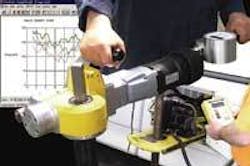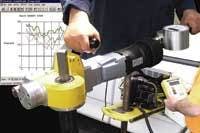Valve Exercising Facilitates GIS Implementation, Asset Management
GIS implementation in a major metropolitan city can easily exceed several million dollars. Without accurate data, return on that investment may not be realized.
Most utilities begin by digitizing their paper maps, without incorporating GPS data. Implementation moves in stages as utilities use GIS first as an administrative tool, then for analysis, and finally to actually drive operation of their systems. This requires knowing the status of system assets -- which generally means hands-on work in the field, because information is often unavailable or inaccurate.
As utilities move to the operational stage, they often find, for example, that a valve mapped at 20 feet west of the curb on Main Street is now located in the middle of the street because the road was widened two years after the map was drawn. A typical case in a major Asian city found that operating data concerning the full cycle for each valve in an entire division was unknown. When they arrive at these points, utilities need specific knowledge of system assets and GPS data.
Thanks to recent advancements in valve maintenance equipment, implementing a valve exercising program can help utilities improve reliability and efficiency, reduce costs and achieve greater regulatory compliance while additionally populating their GIS databases with critical data.
At AWWA’s 2006 Annual Conference and Exhibition, E.H. Wachs Co. will be exhibiting its Wachs Automated Valve Equipment (WAVE) and its Valve Information Tracking And Logging System (VITALS).
The company’s valve exercising equipment ranges from lightweight handheld valve exercisers to the heavy duty TM Series Truck Mounted unit. The systems offer automatically adjusted and preset torque controls, with limiting to as little as 10 lb-ft. This insures proper exercising and minimize risk of valve breakage - while reserving surplus torque for difficult valves.
The automated systems integrate easily with GPS, capturing critical location and operating data while generating initial and final torque charts across the valve exercising sequence. Comparative torque analysis shows the extent to which full cycle operation has been achieved and indicates conditions that need further remediation, such as bent valve stems.
Data management features include up to 100 user-defined comment fields on specific performance criteria, date and time stamps of all records to facilitate work order management, and data output from the valve exerciser to VITALS analysis software or to general-purpose spreadsheet or database applications.
The systems offer infrared data transfer technology to download information on valve performance and position. The information can be transferred to a PC, where analysis, historical tracking and export to GIS and other applications can be performed.
Management at the Asian city previously cited had implemented GIS to the administrative stage and was surprised to find how little tabular data they had on their system assets. Recognizing the need to physically identify and verify location and status of assets mapped to their GIS, they chose to implementing a valve exercising program.
As in most systems, local managers operating under increasing budget pressures initially expressed concerns about a comprehensive exercising program, with worries about valve breakage that could result in service interruptions and the expense of previously unforeseen repairs. Data collected from the onset quickly dispelled their concerns. Some of the lessons learned included:
• Populating the GIS with accurate asset location and data enhances operation of their water system; isolating main breaks quickly and effectively with minimal service interruptions was the most frequently cited benefit.
• Establishing a nearly paperless valve maintenance program increases productivity while improving the reliability of work order and asset management systems.
• Machine operation of valves enhances both worker safety and productivity.
• Exercising valves with machine control of torque dramatically reduces valve breakage as compared to exercising valves manually with “T” handle wrenches and cheater bars.
• Many valves believed permanently seized and in need of replacement (even motor operated valves) can be restored to full operability through proper exercising.
• Valves in service for as little as 10 years, regardless of type, can be operating at less than full cycle and can be restored to full operability through proper exercising.
These experiences are typical among utilities that have undertaken this process. The first and most important step in successfully implementing a valve exercising program is to set reasonable goals and recognize that they vary depending upon system size and availability of resources. Some systems with as little as 4,000 services have begun by exercising 25 valves per crew per day, while some large cities started out accomplishing only 3-6. As the benefits described above are realized, work rates invariably increase.

